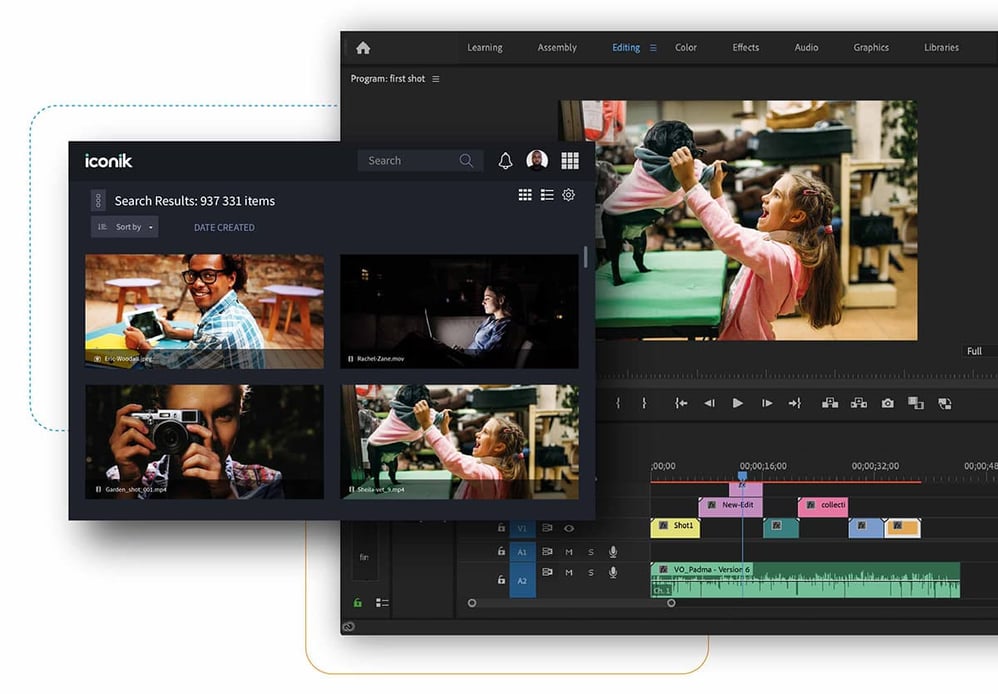
South African agency Ginkgo migrates archive to the cloud
Challenge
Ginkgo Agency is a South African digital content agency which creates original Editorial, Brand and Long-Form content that stands out and captivates people in a media-saturated landscape.
Ginkgo Agency has a rich, 270TB archive of expertly shot media that highlights the diversity and beauty of Africa and other continents. This content has high reuse value however, as this media has previously been stored on-premise over a number of disparate portable servers, it was extremely difficult for internal users to search and retrieve footage, let alone for external third parties.
Support Partners is the leading independent media technology consultancy in London, Bristol and New York, working with brands, broadcasters, newspapers and agencies to deliver fully integrated cloud and in-house production environments and workflows.
Support Partners was approached to re-imagine how Ginkgo Agency’s archive could be stored, previewed and made globally accessible, thus allowing content to be reused.
With a cloud-first approach, Support Partners designed, developed and deployed a platform which enriches and hosts the existing extensive archive, can be accessed internally and by third parties, is available anywhere and ensures the ongoing categorisation and secure storage of assets as they are produced.
Solution
The elasticity that iconik offered for cloud resources enabled the team to get their local storage into the cloud with no storage limitations. Since that intense beginning at the Poker World Series, Colin has brought many new users into iconik with little need for follow up support.
Cloud for cost-effective and secure archive storage
Creating a staging environment locally, users can offload assets to a designated folder which then transfers the media to a local AWS S3 bucket. At this point, a cloud based transcoder creates an edit-ready proxy which can then be imported into the cloud-hosted asset management system.
Some other key benefits of utilising the cloud for archive storage over LTO are:
- Predictable cost modelling aligning to OPEX
- On-demand limitless capacity
- Intelligent file storage lifecycle policy for consistent cost optimization (AWS can automatically store content on the most cost-effective storage service based upon access and usage patterns)
- High availability and data redundancy, with optional extended geographic regional redundancy (store data in multiple dispersed regions for even greater disaster recovery mitigation)
- Global access and management not tied to single location or associated infrastructure
Iconik for location-agnostic viewing and retrieving
As cloud storage is entirely built upon a consumption model, realising the maximum return on the investment is crucial. Key to this is having oversight into how the business, both internally and externally with third parties, searches, views, curates and manages stored media. To optimise each of these functions, a centralised management layer is required, enabling multiple staff to access, and benefit from, the content stored throughout each stage of the production life cycle.
On evaluation, Support Partners recommended deploying iconik as the media-centric management layer. Uniquely, iconik has been built from the ground up to be cloud-native, allowing it to take advantage of cloud functions and capabilities which may not have been available with traditional, on-premise systems. Additionally, as a Software as a Service (SaaS) offering, Support Partners could test and gradually roll out the system, in conjunction with iconik, without any up-front capital expenditure and ensuring that the solution met all of the users’ requirements before switching from proof-of-concept into production.
![]()
A major differentiator between iconik and similar products is the ability to “bring your own cloud” storage (BYOC), meaning that Ginkgo Agency remains in control of its own assets (which are stored in AWS). Iconik presents the content via a web application rather than, as per other vendors, insisting on usage of their own cloud storage or by charging a per asset fee for content stored within the database. Only user licenses and consumables are charged for, again ensuring cost control and transparency.
In our workflow, the proxies generated in AWS via Media Convert are stored in iconik and linked to the hi-resolution master files stored in AWS Deep Glacier. Users can browse the archive anywhere in the globe, requesting either an edit-ready proxy or the hi-resolution original asset via the iconik portal.
In addition, a review and approve workflow was deployed. This allows editors to upload versions of content they are working on to iconik via the web GUI, share them with third parties who in turn, can comment, download or edit the media.
Cognitive for intelligent tagging
Whilst the cloud can be used for cost effective storage and distribution of assets, it’s the additional services that become available from migrating to the cloud that can really add value and change how businesses operate. This is no better demonstrated than with cognitive services.
Cognitive services uses machine learning and artificial intelligence (AI) to enrich the metadata of an asset. In the case of Ginkgo Agency, we were able to run cognitive services via iconik such as optical character recognition (OCR), brand detection, facial recognition and speech-to-text across their archive in order to deepen the categorisation of the assets and drastically improve the search capabilities.
With a rich archive including wildlife and lifestyle footage, Ginkgo Agency’s assets have a high reuse rate. By attributing time-based metadata across the archive, Support Partners has enabled both internal editors and third-parties to find video and images that would have previously been unsearchable. This enriched archive helps reduce production costs by enabling the usage of b-roll footage from previous campaigns.
Adobe panel for easy reuse
The final piece of the project was to give the editors easy access to the archive of assets. A fundamental goal of Support Partners is to reduce the number of User Interfaces creative personnel have to work with - if we can keep a member of the creative team working within a single application then they will fundamentally be more productive.

The iconik panel, available through Adobe Creative Cloud, offers the Ginkgo Agency’s editors direct access to their cloud-based archive without having to leave the creative environment. Users can search iconik for assets, download edit proxies, and then, once a project is complete, re-conform with high-resolution master asset all within Premiere Pro.
“This project has been about much more than just transferring our archive into the Cloud, it’s been about enriching our content assets and making them available to a broader audience in a more useful and powerful way. Throughout this project, iconik has helped us understand what is possible and has turned a fragmented set of media assets into a coherent and valuable archive resource.”
-Janine Fourie, Director, Ginkgo Agency
Impact
The impact and benefits of this project are manifold. Ginkgo Agency now has access to its huge, extremely valuable archive, with the knowledge that the content is secure. By cognitively tagging the existing content, it is now infinitely easier to find footage of moments, people, places, brands and so on, which otherwise could have been lost should the content have remained on-premise and unenriched. Using the cloud to host the archive means that it is universally accessible - regardless of where the creative team is located they can search and retrieve any existing asset they may require, freeing them to capture, share and enhance beautifully shot stories on a global scale.
Other technologies used in this case study
AWS S3
Amazon S3 or Amazon Simple Storage Service is a service offered by Amazon Web Services that provides object storage through a web service interface. Amazon S3 uses the same scalable storage infrastructure
AWS Media Convert
AWS Elemental MediaConvert is a file-based video transcoding service with broadcast-grade features. It allows the simple creation of video-on-demand (VOD) content for broadcast and multiscreen delivery at scale.
Google Vision API
Google Cloud’s Vision API uses REST and RPC APIs to assign labels to images, classifying them into predefined categories. It can detect objects and faces, read printed and handwritten text, and builds metadata into your image catalogue.
Originally posted by iconik ingetration partner, Support Partners
Images in this post do not belong to Ginkgo Agency